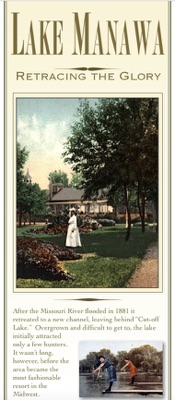Historical Society of
Pottawattamie County
County Seat Council Bluffs, Iowa
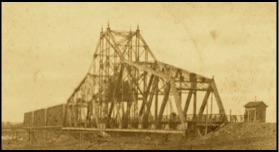
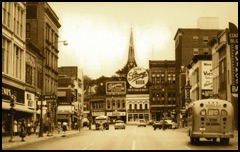
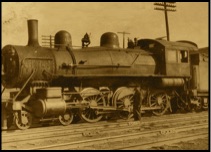
Lake Manwa: Retracing the Glory
A lake whose reputation goes from "mosquito infested swamp" to “Coney Island of the Midwest" in its first five years is certainly on the fast track to success.
That's just the way it was with Lake Manawa, then known as “Cut-Off Lake,” created in 1881 from a Missouri River flood. Initially thought just a transient overgrown body of water only a hunter could love, its commercial potential was recognized by E.H. Odell of New York. He purchased land along the south shore and established a bathing resort he named Manhattan Beach.
The idea caught on. Its success was noted by Council Bluffs real estate developer Hattie Hay. She and her husband purchased 160 acres on the opposite side of the lake and laid out a portion of the north shore as a subdivision.
Development in the area was hampered by the long ride from town in horse drawn vehicles. Recognizing a need and opportunity two dozen businessmen organized the Lake Manawa Railway Company in 1887 to build a rail line to the lake. The company also purchased ten acres on the north shore to create a resort hotel and amusement park to stimulate traffic on the new railroad.
Enthusiasm was strong and improvements came quickly on both sides of the lake. The city’s elite took interest in the area as did those seeking free medication when word spread the lake’s water contained minerals that gave it healing powers. A 600-foot boardwalk and pier with a restaurant, soda fountain, and saloon that could seat over two thousand sat about where the Council Bluffs Country Club is today. Various dance halls thrived over the years, as did a ball park, casino, movies, zoo, shooting gallery, tennis courts and amusement park rides, including a roller coaster said to be the largest in the midwest. Mock sea battles were staged on the lake with decorated boats. The Kursaal— a dance hall built over the water on piers— was a signature feature of the south side resort, about where the Lake Manawa bath house is today. Patrons of the south shore attractions had to cross the lake via boat.
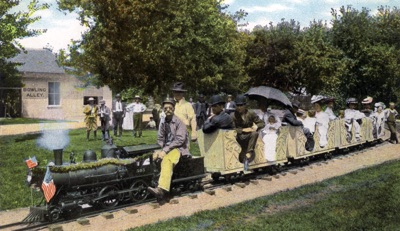
As the 20th Century took hold Lake Manawa was likely the most popular pleasure resort east of Chicago, yet by the end of the 1920s the amusement park had closed and the glory days were over. The decline related to a variety of factors, one of which was its spectacular success. This had not gone unnoticed by competitors; Omaha businessmen developed Courtland Beach at Carter Lake which became reachable by streetcar in 1891. Omaha’s Trans-Mississippi Exposition pulled potential patrons away in 1898 as did the Spanish-American war and a few years later World War I. A switch in the gambling operation from the relatively honest Ben Marks to the more unsavory Mabray gang began to give the resort a bad reputation. Newspapers reported a proliferation of pickpockets; games of chance lined the midway, with shills carrying bountiful prizes making it appear winning was easy, when in fact the ornate wheels of number games had secret breaking systems controlled by the operator, overinflated balls wouldn’t fit through hoops, and rings were too small to fit over the bottles toward which they were tossed. Casino gamblers reportedly bilked over a million dollars a year out of patrons. A 1916 state law making dancing illegal on Sundays cut into dance hall profits. The final straws were the Easter Sunday tornado of 1913 that destroyed several buildings including the popular Kursaal dance hall and a fire in 1926 that claimed the grand pavilion on the north shore. By 1935 the Mecca of the Midwest was a “mud puddle in the middle of a marsh."
The Iowa Fish and Game Commission began to acquire the land in the 1930s and began the process of converting area to public use. In the 1940s three wells were created to provide water; a diversion dam and pumps to bring in Missouri River water added in 1956. A major dredging project in 1982 give the lake a greater depth. Today, 130 years after the first development, Lake Manawa State Park thrives as one of the most popular outdoor recreation facilities in the metropolitan area.
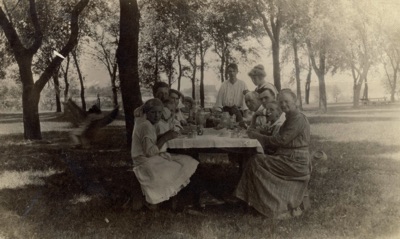
Lake Manawa-- Then and Now
The popularity of Lake Manawa in the late 19th and early 20th centuries made it a natural subject for picture postcards and photographs. By the 1920s the glory days had faded, leaving few landmarks for the curious of the 21st century to determine just where in the residential developments and state park of today the grand attractions and sites featured on the postcards were once located. The current photos were taken at approximately the same location as the site featured on the post card. The downloadable brochure lists GPS coordinates; enter these into your cell phone's map app for directors to the sites pictured. (Postcards from Historical Society archives; current photos by Karen DeForest).
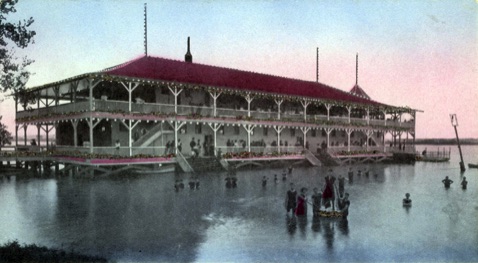
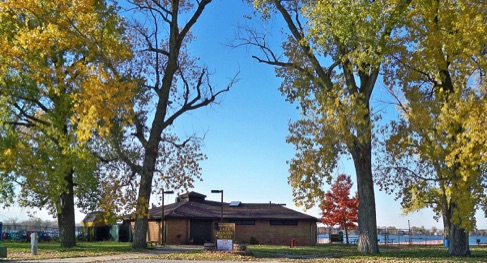
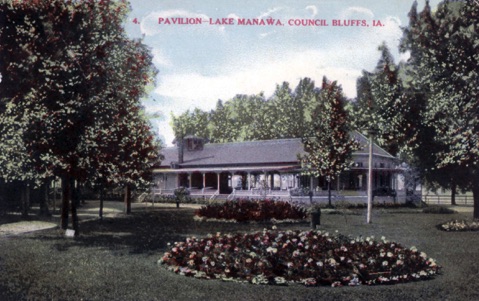
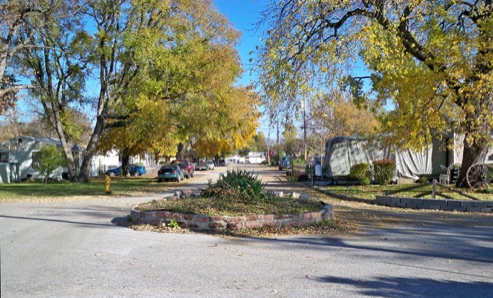
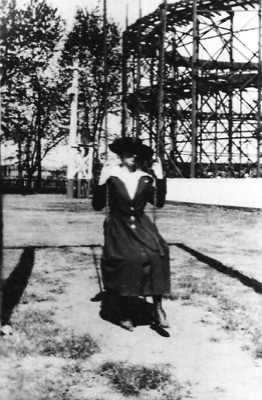

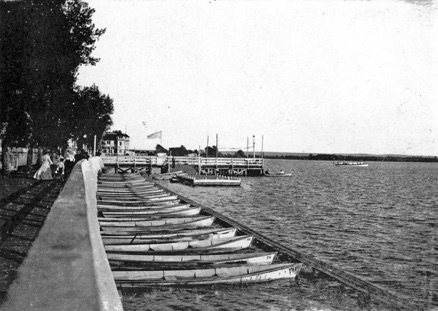
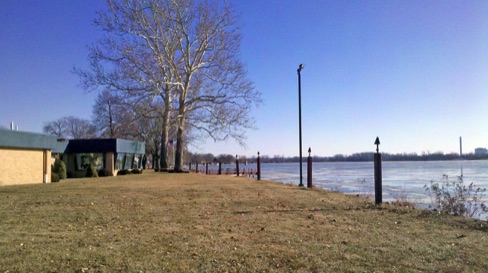
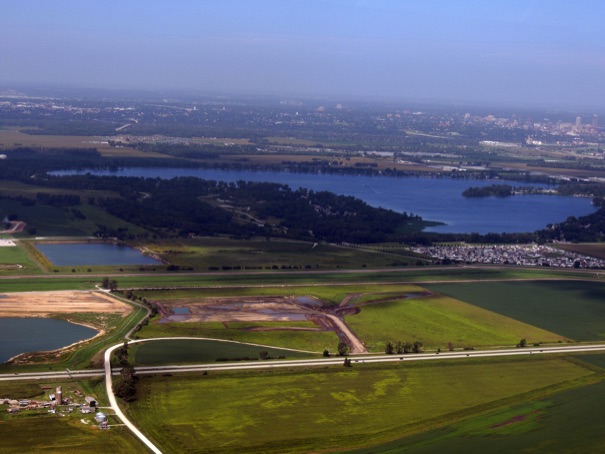
Site of Manhatten Beach
Site of boardwalk and amusement park


(Photo courtesy of Mike Warner)
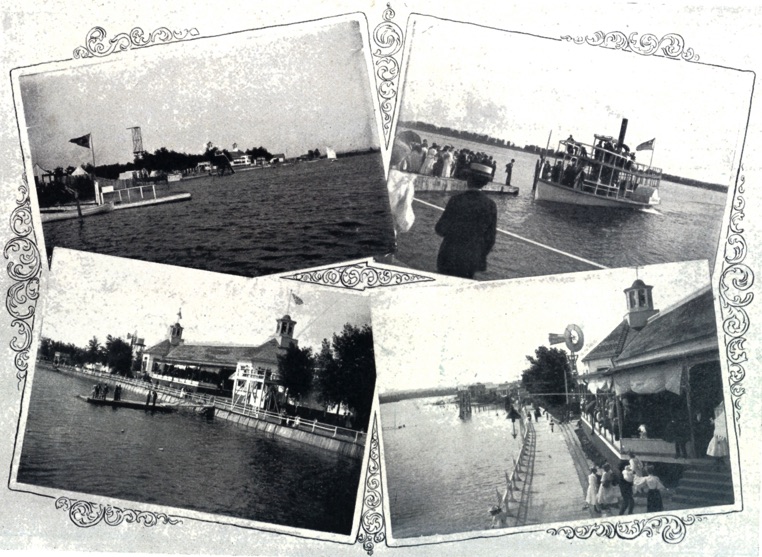
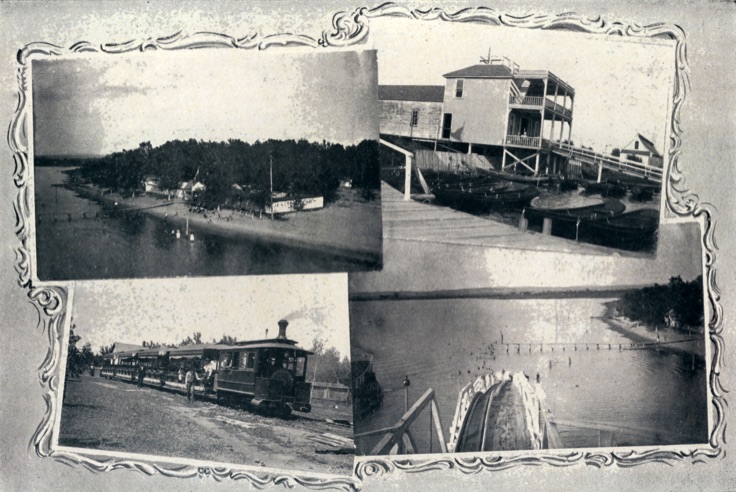
(Story by Richard Warner. Dr. Warner serves on the board of directors of the Historical Society of Pottawattamie County.)
Then...
Now...
Author Lorna Seilstad set three of her novels at Lake Manawa. She was a guest on one of our podcasts.
